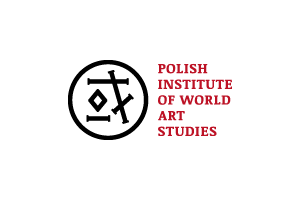


Day
Presentations



10:20
(1 hour)
Canary Wharf London - Art on the Estate, Krakow, Warsaw
Igor Mitoraj's Public Art 360° Virtual Tour
Igor Mitoraj’s Art Virtual Gallery with comments by Bohdan Michalski and Marcin Wichrowski
11:20
(15 minutes)
How to Connect to Ancient Art by Breaking It: The Case of Modern Japanese Gardens and Mitoraj
12:20
(15 minutes)
Orpheus' songs. Mitoraj's 'dialogue' with Greek sculpture: some observations
14:00
(15 minutes)
Presentation of the book “Mitoraj – A Dialogue Between Art and History”: “Neo-Platonism and spiritualism carved in stone: Michelangelo and Mitoraj”
14:15
(15 minutes)
Beauty Blemished: Igor Mitoraj’s ‘Broken’ Sculpture and the Aesthetic of Wabi-Sabi
14:30
(15 minutes)
A banquet with a centaur in the background. A few comments on the status of sculpture in public space
14:45
(15 minutes)
Sculpture in urban public space - architectural and landscape perspective
It is not uncommon for rule breakers in art to get inspiration from a much older art. In fact this was the essence of the art of the Italian Renaissance, connecting to the art of Antiquity for renewal. How could we do this in modern and contemporary art? Our artist Mitoraj is certainly doing this with his sculpture. I should like to introduce to you some such examples from the art of modern Japanese gardens. There are mainly two types of gardens usually seen as typically Japanese: the stroll garden with a pond and the dry stone garden. In one way the more the stereotype is fixed, the more some artists get excited to break the prevailing rules without losing the association with the original source of their inspiration. Some of my examples are unbelievably strange, but still identifiable as a Japanese garden, others initially look they are following the rules, but on closer inspection breaking almost every one of them. All my examples are open to the public and these gardens share the same concerns with Mitoraj’s pubic sculptures of how to deal with a public space. Often the old/private becomes contemporary/public.
When analysing the changes in sculpture in its “expanded field” condition and the history of figurative sculpture in the 20th century, Igor Mitoraj seemed to be making serious efforts to regain the lost quality of beauty in his works. This is especially evident when looking back at the pattern of sophisticated beauty of ancient sculpture, but with a touch of a postmodern approach.
In the face of the rich artistic achievements and popularity of Igor Mitoraj’s work both among art merchants and collectors as well as many museums and galleries around the world, the author poses the following question: Did Igor Mitoraj – an artist and a loner – isolated from the outside world in his studio in Pietrasanta, leave behind any successors, disciples and followers? How does the world of art react after the death of contemporary Michelangelo: art merchants, curators and patrons of art? Which sculptor, if any, will be able to fill the void left by Mitoraj in the European and global art market? Can one of the Polish sculptors of the so-called young generation, due to the explosion of interest in his figurative sculpture in recent years, become the new Igor Mitoraj?
There have not been many attempts to date to analyse sources of inspirations of Igor Mitoraj’s sculptures and paintings. It appears that there are quite a few of these inspirations, despite the fact that the artist created his own very personal style. He spent more than one year in Mexico but first of all he knew very well most of the schools of European sculpture. Needless to say, Greece was his favourite land. The aura of his style and the subject matter of his sculptures and paintings derive mostly from the Hellenic spirit. Even such masterpieces as Frédéric Chopin’s portraits appear to be inspired by Greek models. There are also some instances of explicit citations from the art of Phidias, who was Mitoraj’s favourite sculptor. What is the meaning of such borrowings? Are we able to clarify the nature of said inspirations from Greek sculpture? The main scope of this paper is to approach Mitoraj’s links with ancient Greek ideals.
Between 1959 and 1968, Igor Mitoraj studied arts in Poland. At the age of 15, he started his education at the State Secondary School of Fine Arts in Bielsko-Biała, which he completed 5 years later. Then, for a short period, from October 1966 to October 1968 he was a student of the Faculty of Painting and Graphic Arts at the Krakow Academy of Fine Arts. These two art schools significantly influenced his creative stand. They raised young people in the spirit of respect for culture and tradition, but also gave them a solid professional background in the field they chose; in the case of Mitoraj, it was decorative weaving. In turn, the short period of studies at the Academy of Fine Arts in Krakow, and especially contacts with Tadeusz Kantor, in whose studio Mitoraj studied, broadened his artistic horizons and contributed to breaking the canons both in relation to artistic disciplines and ways of artistic expression. Based on the reference material, the paper attempts to trace what Mitoraj could have learnt in the aforementioned schools.
Igor Mitoraj’s art is a bridge spanning over twenty-five centuries of European art. The sculptures which are the pillars of the bridge make up a great triad of figures: Doryphoros called Canon by Polykleitos, Michelangelo’s David and Mitoraj’s Icarus. In aesthetics, the pillars representing three different eras of reflection on art are philosophers such as Plato, Plotinus, Marsilio Ficino, and present-day postmodernists. Three statues, three different concepts of beauty immortalised in stone, are symbolic of three eras in art history.
Igor Mitoraj’s sculptures represent figures which are invariably truncated, cracked and broken. These ‘wounds’, as the artist himself frequently stated, constitute a pivotal feature of his entire oeuvre, as does their juxtaposition with the sublime classical beauty of the human body. The idea of ‘blemished beauty’ resonates with one of the most important principles in Japanese aesthetics, namely wabi-sabi. This paper does not attempt to suggest any direct inspiration from Japan in Mitoraj’s work. Instead, it proposes an alternative perspective of its fundamental characteristic. Furthermore, this new angle is relevant in the present context of public art in business-oriented environments, as it carries a moral message for contemporary corporate milieu.
The paper will deal with issues related to the functioning of works of art (especially sculptures) in public space. The starting point for the discussion will be Mitoraj's sculpture in Canary Wharf, London.
Selected examples of 20th-century objects, such as outdoor and monumental sculptures, their eventful histories and various aesthetic and semantic evaluations will also be mentioned. The analysis will focus on the interaction between the object and its surroundings, in the topographical and social sense, determining the way the work is perceived and interpreted. The perception and interpretation of the work vary in time and depend on the current situation. A question will be asked about the need and justification for the functioning of art in public, social and historical space.
Landscape architecture "is primarily an art, and its most important function as such is to create and protect the beauty around human settlements and more broadly - in the natural scenery of the land." This definition by one of the founding fathers of landscape architecture, C.W. Eliot positions that field very close to sculpture, nearly placing an equation mark between them. The equation mark takes the form of the word “art”. Creating sculptures is an art. Creating landscapes is an art as well. Although we treat both areas separately, this work aims to indicate convergent points and common fields of action, highlighting not only examples of the use of sculptural works in creating urban landscapes but also proving their integral and synergistic cooperation in creating new values of public spaces. Contemporary projects such as La Défense in Paris or London's Canary Wharf are interesting research fields.